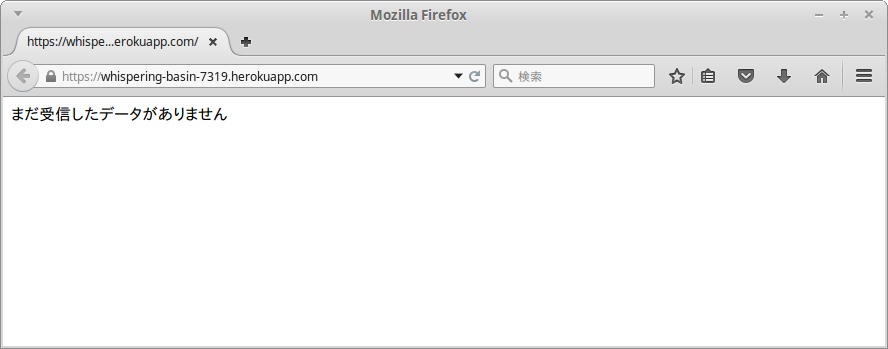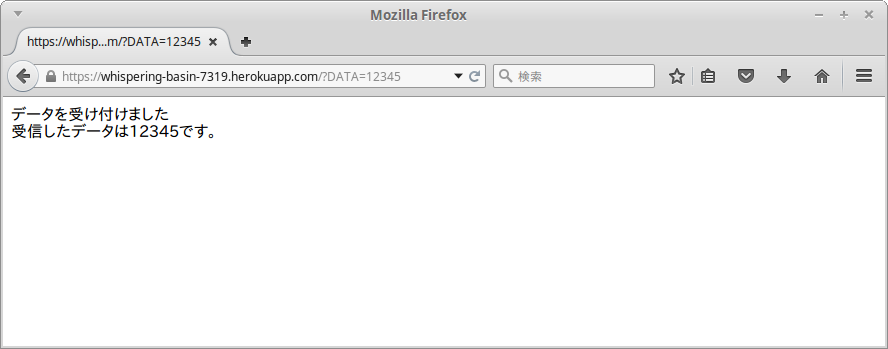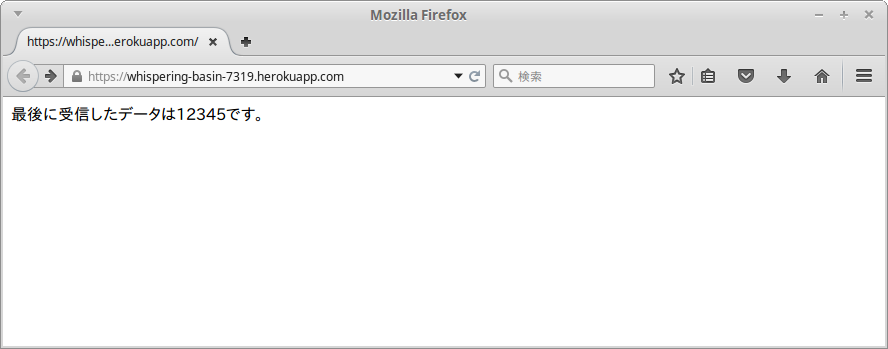16. クライアントによって異なる動作をさせる
GETメソッドのパラメータが扱えることがわかったので、これで区別させてみたいと思います。まずは適当な作業用のディレクトリを作ります。
~/heroku $ mkdir hello-heroku2 ~/heroku $ cd hello-heroku2/
次にソースコードを準備します。内容は下記の通りでhello2.jsという名前で保存します。
var express = require("express");
var app = express();
var hold = undefined;
app.get('/', function(request, response) {
console.log(request.query); // for logging
var data = request.param('DATA');
if(data){
hold = data;
response.send('データを受け付けました<BR />'
+ '受信したデータは' + hold + 'です。<BR />');
} else {
if(hold){
response.send(
'最後に受信したデータは' + hold + 'です。<BR />');
} else {
response.send(
'まだ受信したデータがありません<BR />');
}
}
})
次に、package.jsonファイルを作成します。
{
"name": "hello-heroku2",
"version": "0.0.1",
"dependencies": {
"express": "4.13.x"
},
"engines": {
"node": "0.10.x",
"npm": "1.4.x"
}
}
これまでの例と名前の部分しか変わっていません。
作成したら、npmで必要なパッケージをインストールします。
~/heroku/hello-heroku2 $ npm install
次にProcfileを用意します。これはファイル名に合わせて修正します。
web: node hello2.js
ローカルでアプリを動かしてみます。
~/heroku/hello-heroku2 $ foreman start 17:37:45 web.1 | started with pid 7322 17:37:45 web.1 | Listening on 5000
ブラウザで「http://localhost:5000/」にまだデータがない旨、表示されます。次に「http://localhost:5000/?DATA=100」としてアクセスした後、再度「http://localhost:5000/」にアクセスすると、セットした値(100)が表示されます。
次にherokuの作成済みのリポジトリにデプロイしてみます。
~/heroku/hello-heroku2 $ git init Initialized empty Git repository in /home/xxx/heroku/hello-heroku2/.git/ ~/heroku/hello-heroku2 $ heroku git:remote -a whispering-basin-7319 set git remote heroku to https://git.heroku.com/whispering-basin-7319.git ~/heroku/hello-heroku2 $ git add . ~/heroku/hello-heroku2 $ git commit -am "1st edtion" [master (root-commit) be8f876] 1st edtion (途中略) create mode 100644 package.json ~/heroku/hello-heroku2 $ git push heroku master Counting objects: 300, done. (途中略) To https://git.heroku.com/whispering-basin-7319.git * [new branch] master -> master ~/heroku/hello-heroku2 $
「$ heroku open」として、動作確認してみます。
起動した直後なのでデータがない状態です。
次に、URLを「https://whispering-basin-7319.herokuapp.com/?DATA=12345」としてみます。
データが設定できました。URLを元に戻してリロードし、記憶しているか確認してみます。
データがherokuのサーバ側に記憶されていることが確認できました。



